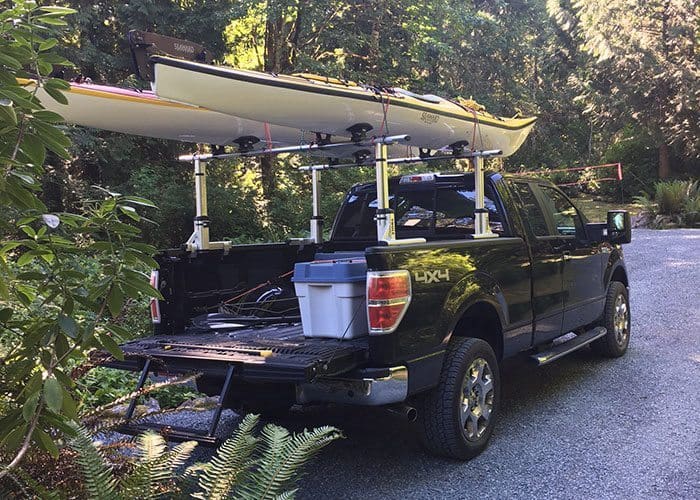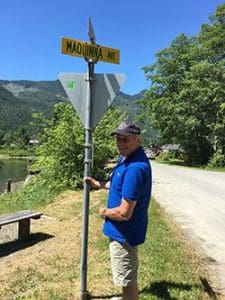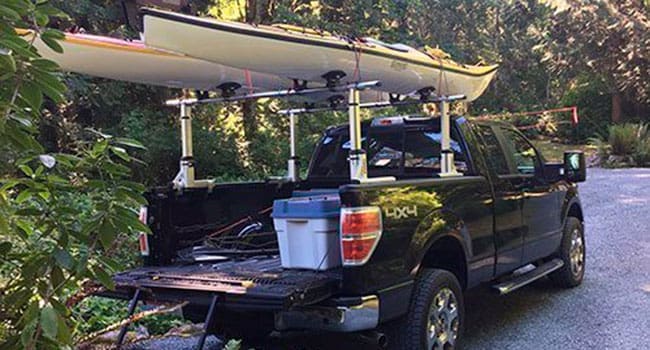
Off for an extended kayaking trip to Nuuchatlitz, on the northwest coast of Nootka Island – off Vancouver Island’s west coast
 Chaos reigns in our front yard. Our two old kayaks have been pulled out from their slumber under the house and their hatch covers pulled off under a blinding summer sun.
Chaos reigns in our front yard. Our two old kayaks have been pulled out from their slumber under the house and their hatch covers pulled off under a blinding summer sun.
Spiders are creeping out of bow and stern lockers. The old Kevlar paddles have been found in the garden shed, along with ancient plastic water containers and waterproof bags. Kayak booties, a hand-line, a waterproof chart bag and a bottle of Coleman stove propane have miraculously reappeared.
This is all happening because our old kayaking pals have summoned us back out on the water. We’re going for an extended paddle to Nuchatlitz, on the northwest coast of Nootka Island – off Vancouver Island’s west coast.
It’s amusing all the consternation this trip is causing.
We started going on multi-day back-country kayak adventures when we were in our late 20s. Back then, my wife-to-be and I kayaked all through Gwaii Haanas before it was a national park reserve. We thought nothing of two weeks in the solitudes of nature, never seeing another boat or even a sail on the horizon. The specifics of our division of labour were established early: I put up the tent and kitchen fly, gathered and chopped firewood; she organized the food and ran the kitchen. We both hand-lined for cod and the occasional salmon. We both remembered to keep a weather eye open, and we both kept a water eye open for suitable creeks and springs as we paddled down the coast.
We kayaked on into our marriage and only the birth of our two children began to check the two-week sojourns off the B.C. coast. Our last big trip was to the Bunsby Islands, just north of Kyuquot, in the mid-1990s. So it’s been over 20 years since our paddles broke water and we slept under canvas on a remote beach somewhere.

Mike Robinson in Zeballos, known for its ecotourism and sport fishing. Zeballos is on the northwest coast of Vancouver Island
Since then, it’s been day trips and afternoon paddles before swims. The boats have aged well and all the gear still works, but somehow recapturing the old memories of what goes where is somewhat challenging. I’ve taken the circa 1980 expedition tent out of its bag twice and set it up in front of the house with much fanfare. The second time, I discovered that I’d put the rain fly on upside down and backwards the first time. I also discovered that the elastic-cord-connected sectional tent poles have to be inserted into sleeves in the tent’s seams. Rolling up the tent and putting it in its bag proved a bit of a challenge. It seems the bag has shrunk – or it’s the wrong bag.
Miraculously, the old aluminum Thule kayak rack fits our pickup’s cargo bed, even though the rack was purchased for another truck 25 years ago. Today, we’ll hoist the boats onto the rack and tension them into place with 25-year-old bungee cords. Hopefully they won’t snap. New tie cords are on the shopping list if they do.
My wife is organizing the food and preparing meal plans with her accustomed diligence and skill. She puts me to shame as I shamble about assembling first-aid kits, fishing gear, emergency flares, waterproof matches and flashlights, and marine charts – all itemized on a Captain’s Check List I religiously typed in 1978 and am now trying to summon from memory. I wonder where I put it?
I had to go to our local marine supply store in Powell River to buy new life-jackets. Our old ones were covered in mould and have been ceremoniously retired.
It turns out that life-jacket manufacture has advanced just like everything else – into the realm of high-tech. I actually walked by the ones I ended up purchasing without realizing they were life-jackets. They’re just like the life-jackets that live under trans-oceanic airplane seats. You put them on un-inflated, like a vest, and pull a toggle as you enter the water. They’re way less cumbersome than the old ones I remember brushing my arms against with every stroke of the paddle (which is why I never used to wear one).
We’re nearly ready to launch. Tomorrow, the old truck will lumber up the road laden with gear. We’re hoping for good weather.
Mike Robinson has been CEO of three Canadian NGOs: the Arctic Institute of North America, the Glenbow Museum and the Bill Reid Gallery. Mike has chaired the national boards of Friends of the Earth, the David Suzuki Foundation, and the Canadian Parks and Wilderness Society. In 2004, he became a Member of the Order of Canada.
The views, opinions and positions expressed by columnists and contributors are the author’s alone. They do not inherently or expressly reflect the views, opinions and/or positions of our publication.

